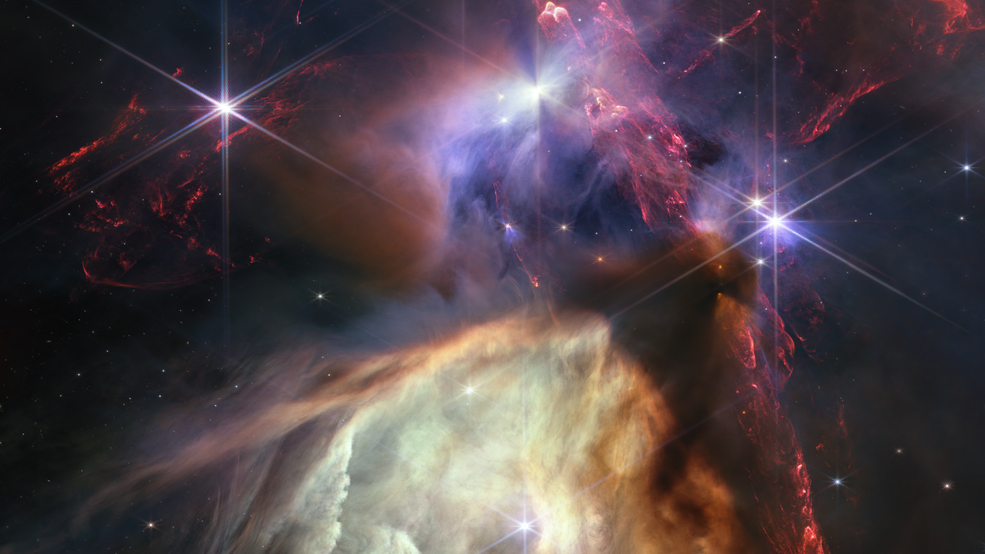
NASA's James Webb Space Telescope (JWST) has just completed its first year of operations and already has provided remarkable, never-before-seen insights into our vast and beautiful universe. To commemorate this milestone, NASA has released an image captured by the JWST of a star-forming region in the Rho Ophiuchi cloud complex, roughly 360 light years away.
In just one year, the JWST has revolutionized our understanding of the cosmos, peering through dust clouds and capturing light from distant corners of the universe. The first five images revealed by NASA and President Biden captured the deepest and sharpest infrared photos ever seen. From a glittering landscape of “mountains” and “valleys” in the Carina Nebula to an enormous 150 million pixel image of five galaxies known as Stephen’s Quintet.
• Check out the best telescopes for astrophotography so you can capture the cosmos close up
Thanks to the advanced high-resolution, high-sensitivity equipment, scientists are developing a much greater understanding of our solar system through studying distant galaxies, how stars formed, and dark matter. There have been some utterly perplexing discoveries too – like how an asteroid belt comet has water vapor and no carbon monoxide; the images it has produced are as stunning as they are informative.
The latest image captured shows around 50 young stars, all similar in mass to the sun or smaller. While the darker areas are the densest, containing thick dust cocoons of still-forming stars, it also depicts jets bursting from young stars surrounded by interstellar gas and red areas of molecular hydrogen.
Klaus Pontoppidan, a Webb project scientist at the Space Telescope Science Institute in Baltimore, Maryland said “Webb’s image of Rho Ophiuchi allows us to witness a very brief period in the stellar lifecycle with new clarity. Our own Sun experienced a phase like this, long ago, and now we have the technology to see the beginning of another’s star’s story.”
As the James Webb Space Telescope continues into the second year of its mission, the scientific community eagerly anticipates the wealth of discoveries and breakthroughs that lie ahead, further unraveling the mysteries of our vast universe. Slowly but surely we are on our way to unlocking the big question, how did the universe come to be? Oh, and it just so happens we get some absolutely jaw-dropping photos to enjoy too!
Why not also check out the best cameras for astrophotography including the Canon EOS Ra - a full-frame purpose designed camera for shooting space.







